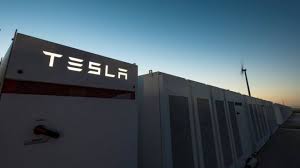
Breaking News
 The man behind the curtain is Peter Thiel...
The man behind the curtain is Peter Thiel...
 Government Free Money Accounts for 19 Percent of All Personal Income
Government Free Money Accounts for 19 Percent of All Personal Income
 Trump Admin Shuts Down Massive $66 Million Food Stamp Fraud Scheme
Trump Admin Shuts Down Massive $66 Million Food Stamp Fraud Scheme
Top Tech News
 Hydrogen Gas Blend Will Reduce Power Plant's Emissions by 75% - as it Helps Power 6 States
Hydrogen Gas Blend Will Reduce Power Plant's Emissions by 75% - as it Helps Power 6 States
 The Rise & Fall of Dome Houses: Buckminster Fuller's Geodesic Domes & Dymaxion
The Rise & Fall of Dome Houses: Buckminster Fuller's Geodesic Domes & Dymaxion
 New AI data centers will use the same electricity as 2 million homes
New AI data centers will use the same electricity as 2 million homes
 Is All of This Self-Monitoring Making Us Paranoid?
Is All of This Self-Monitoring Making Us Paranoid?
 Cavorite X7 makes history with first fan-in-wing transition flight
Cavorite X7 makes history with first fan-in-wing transition flight
 Laser-powered fusion experiment more than doubles its power output
Laser-powered fusion experiment more than doubles its power output
 Watch: Jetson's One Aircraft Just Competed in the First eVTOL Race
Watch: Jetson's One Aircraft Just Competed in the First eVTOL Race
 Cab-less truck glider leaps autonomously between road and rail
Cab-less truck glider leaps autonomously between road and rail
 Can Tesla DOJO Chips Pass Nvidia GPUs?
Can Tesla DOJO Chips Pass Nvidia GPUs?
 Iron-fortified lumber could be a greener alternative to steel beams
Iron-fortified lumber could be a greener alternative to steel beams
Tesla's Record-Breaking Mega Battery, Installed on a Bet, Saves Australia $40 ...

It has been one year since the world's largest lithium ion battery was switched on in South Australia to combat costly statewide power outages – and this new report shows that it has performed astonishingly well.
The 100-megawatt Hornsdale Power Reserve, which was designed by Tesla, has saved over $40 million AUD in annual maintenance costs to the electrical grid, also known as frequency controlled ancillary services (FCAS).
The report, which was conducted by consultancy firm Aurecon and commissioned by Neoen, the energy company that manages the massive battery, goes on to say that this is a 75% reduction in annual maintenance costs compared to 2016 and 2017.
The data is especially impressive since the battery itself only cost about $66 million.
The battery was built in just 54 days after Tesla CEO Elon Musk made a bet with state legislators, saying that if he was unable to finish the battery in 100 days, he would give it to them for free.

 #546: Exercise Polaris
#546: Exercise Polaris


